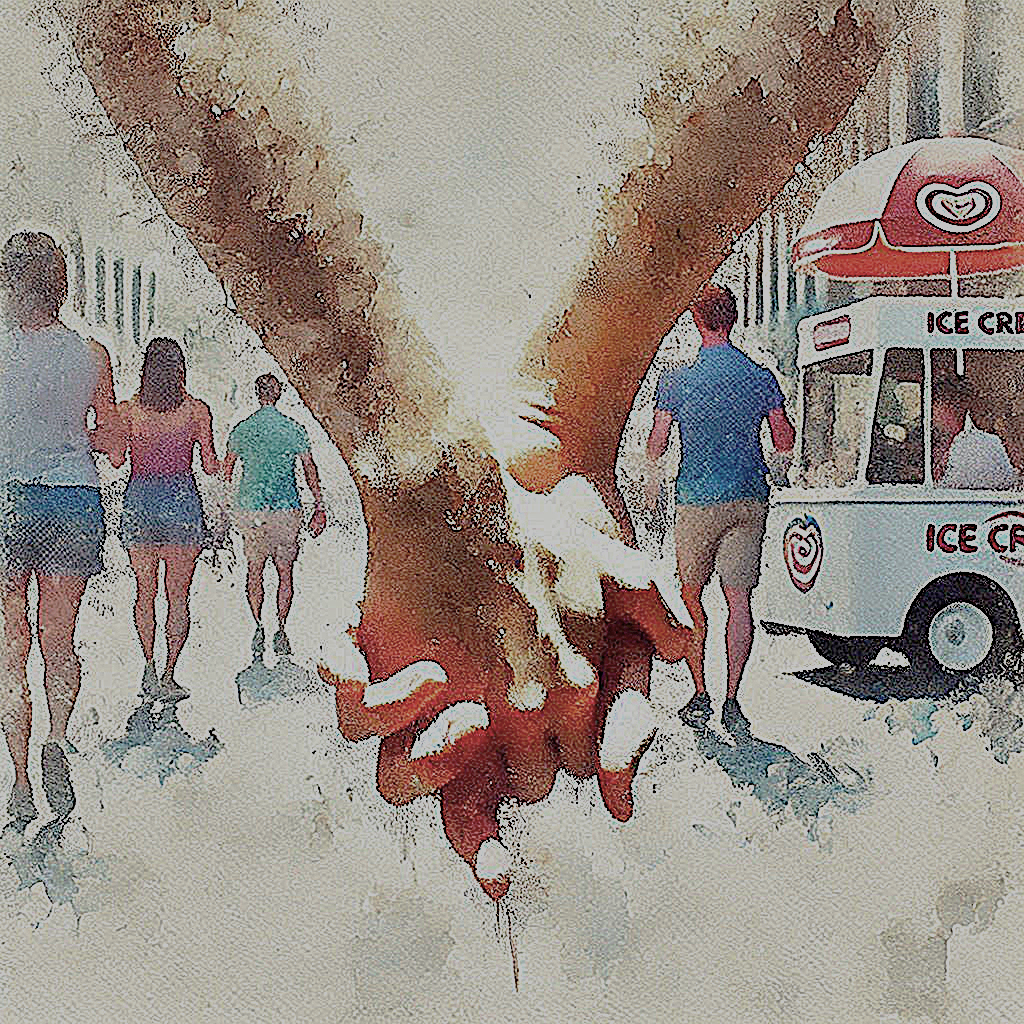
In the Red Zone
“The red zone?” I ask, pulling my car up to the parking space my friend Susan has indicated, in front of the hospital.
“Yep,” Susan nods.
“Seriously, the red zone? Not the blue handicapped space? Red?”
“Yeah,” she says.
“You’re a fucking rock star.”
Red, as in no parking. Red, as in emergency vehicles only. But this red curb has the word Reserved painted on it, and Susan has a parking permit that reads Radiation Oncology, Parking Permit, April – June 2011.
She unfolds the hot pink cardstock and slides it onto my dashboard.
Temporary, the dates imply. As in, this will be over soon; as in, this is all a story we will tell one day: her brain cancer diagnosis, how she fought so hard, how maybe she won. Or, according to her prognosis, how maybe she didn’t.
“Ready?” I ask.
“Let’s go,” she says.
Before we leave the car, I snap a couple pictures: my hand on the steering wheel, wearing my rubber “Team Susan” bracelet, brain-cancer gray, the same color as the clouds today. Then the parking permit on the dash. Then my red Jetta parked in the red zone. Then Susan, standing beside the hospital sign, holding up a sheet of paper that reads “Thank You, Sweet,” a message of gratitude for a travel company that raised a significant chunk of change for Susan’s family.
“Hold on,” I tell Susan, adjusting my camera, “I want to try that one with a flash.”
Susan angles her hat and produces a thousand-watt smile.
“Excuse me,” a voice behind me says.
I look over my shoulder at the security guard watching us, a puzzled expression on his face.
“You’re not allowed to take pictures out here without the permission of the hospital management.”
Before I can think, protective instinct kicks in and I blurt out, “This is my friend Susan. She has a radiation appointment in a couple minutes. She asked me to take a picture of her for a thank you card she’ll be sending to some folks who are helping her out.” Susan and her wife Becky call this move ‘playing the BT card’—no one says no to a woman with a brain tumor.
“Okay,” the security guard relents, “maybe just one more?”
That’s when I realize he’s probably been watching us from the moment we parked—taking pictures of the building, the car, the parking lot. We look like we’re casing the joint. We also look like two of the least harmful creatures on Earth—Susan in her hoodie and Chuck Taylors, what’s left of her blonde bob tucked under a newsboy cap; me in my skinny jeans and peasant shirt, flower pinned to my linen hat. I snap my last picture then concede to the guard, “I know this probably looks strange to you. I guess most people don’t bring cameras to their radiation appointments.”
Susan and I laugh about this as we cross through the automatic doors into the building. “Okay, yeah, I suppose we looked a little suspicious,” she says.
“And ever so threatening,” I add. “I mean, you could be smuggling something life-threatening under that cap.”
“Oh could I?” she asks, raising her eyebrows.
“Downright dangerous,” I say.
Laughing, we fall into each other, my arm wrapped around her shoulder, our voices echoing off the empty corridor’s walls.
I suffer from what my family calls the Dumesnil Photographic Affliction. We take pictures of everything. Not just family vacations and first days of school, but elevator rides, grocery shopping trips, doctor visits, and smog checks. Our tongue-in-cheek motto: if you didn’t photograph it, it didn’t happen. The danger of this kind of obsessive recording, of course, is that it removes the photographer from the present moment. So instead of enjoying sitting across from my four-year-old son, watching him eat his oatmeal turned purple by frozen blueberries, I am adjusting my camera settings, trying to get the best lighting, the right angle. Instead of experiencing the contact high that comes from witnessing my six-year-old’s gleeful leap off the diving board—arms and head flung his back, chest raised toward the sky like some juvenile sun god—I am praying that my camera’s sports mode catches the light glancing off his soaking wet chest, the sequenced entry of body into water. The benefits of the affliction: we will remember the moments that filled us with such awe and wonder and gratitude that we just had to freeze frame them for safekeeping. Also, our children will learn that all moments of their life—not just the big moments, but the mundane, everyday sort—are worth savoring.
So I’m used to packing my camera wherever I go, but dropping it into my trunk this morning, on my way to pick Susan up for her appointment, I second-guessed my instincts. Is it weird to want to photograph your friend’s radiation appointment? Was I riding the edge of something deeply necessary or strangely inappropriate? Would I ask Susan if I could take pictures? Why did I even want them? Sure, I’ve been the unofficial photographer for all of my family’s and Susan’s family’s events for the past ten years. But this isn’t a lakeside vacation, or a kid’s birthday party, or a wedding, or a Pride Parade. I questioned myself all the way to Susan’s house, but in the end, it was Susan who brought up the idea of documenting the appointment.
“I keep wanting to ask the radiation nurses if they would take pictures of the process,” she said, “because people keep asking what it’s like.”
I nodded, “I have my camera in the trunk. You can use it if you want.”
So, I snapped pictures of the Radiation Oncology sign outside the waiting room, pictures of Susan scanning her card to open the security door, pictures of the reception desk, the Patients Only sign beside the shuttered saloon doors that separated the waiting room from what looked like the locker room of an upscale gym. Now I am sitting in one of twelve comfy chairs, watching Susan, a former college athlete, perform her game-day rituals: she removes her rings and necklace, tucking them into the same pocket in her purse every time; she shuts off her cell phone; she ducks out to the restroom; she conducts whatever internal pep talk she’s concocted for this round of treatment. Then she looks at the camera in my lap. I hold it up, “This is easier than it seems,” I say. “If they want to shoot in auto mode, keep it as it is. If there’s a lot of light in the room,” I adjust the wheel on top of my camera, “turn it to P.”
“Got it,” she says, wrapping the camera strap around her wrist.
Then it’s time. What do you say to a friend before she steps into the adjacent room to have her brain radiated? Good luck? Give ‘em hell? I love you? I am so sorry, this is so fucked up, and I wish I could make it stop?
“Go get ‘em,” I say, then I blow her a kiss and wave, watching her push through the saloon doors. Patients Only Beyond This Point.
Watching a friend undergo brain cancer treatment is like watching a head-on, high-speed car crash—you wince against the inevitable impact; you hope for a near-miss.
Except cancer happens in slow motion—if her treatment succeeds, Susan’s doctors believe she could live for up to eight years. Sitting here in this waiting room, devoid of photographic distractions, I realize I’ve been wincing since Susan’s doctors diagnosed her with an inoperable, incurable, midbrain glioma, the kind that makes every doc who has looked at her MRI slide say, “Not good. No, not good at all.” My friend is in danger. (Wince.) There’s nothing I can do. (Hope.)
Scratch that. There’s plenty I can do. Cancer requires a lot of doing. In the six weeks since Susan’s diagnosis, her team of friends has raised over $20,000 to support her family. We have driven her to appointments, cooked meals, hunted down paperwork, researched alternative treatments, made phone calls, installed an air conditioner in her house, replaced her broken dishwasher, built a climbing structure for her youngest daughter, and reworked her garden so she will have a beautiful place to rest as she undergoes first radiation treatments then chemotherapy. We have sent cards and flowers, burned inspirational CDs, delivered books and movies to her doorstep. But none of this doing creates the outcome we really want: we want the tumor gone. Barring a Hollywood-style miracle, that’s not going to happen.
In the absence of that outcome, what do we have? More wincing? More hoping? More doing?
We seem to engage all three—wincing, hoping, doing, braided together like a rope attached to a life preserver. Like last weekend, when our two families got together at Susan and her wife Becky’s house. Their two teenage daughters, Sophie and Maddy, hid in their bedroom, playing guitar and reading. My two sons and their four-year-old daughter, Posy, got crazy in the backyard, jumping on the trampoline and attacking the new climbing structure with their imaginations. Susan, Becky, and I hung out in the kitchen, washing dishes and talking about our plans for our annual lake vacation.
“Oh, that reminds me,” Becky said, reaching for a drawer. “We still have these,” she held up a baggie with two number-shaped birthday candles in it.
“You’re kidding,” I said, taking the bag, “you kept these?” My youngest son is sixteen days older than Susan and Becky’s youngest daughter, so every year, after we’ve pulled the number candle out of his birthday cake, we’ve handed it over to Posy for hers.
“What should we do with them?” Bec asked.
I was about to say “toss ‘em,” but then I noticed the digits, four and three. “Forty-three,” I said. “Save them for my next birthday.” I nudged Susan, who had her hands plunged in soapy water. “Then thirty-four for your next birthday.”
“Hey yeah,” Susan said.
Becky added, “Then forty-three again for Susan’s forty-third,” as if her words could build a bridge for Susan’s life to cross to the safe bank of forty-three.
I looked at the candles again, those short wicks, designed for one-time use, the doc’s prognosis dangling in front of us. “Definitely,” I said.
Underneath the braid of wincing, doing, and hoping—the trifecta of survivorship—what do we have? Reality: Susan is fighting not for her life—no, the brain tumor won’t go away; she is fighting for time—a brain tumor that shrinks and grows back slowly. I used to believe that optimism was the only solution to such an impossible problem—hoping for the miracle. In recent years, however, I have learned the real key is acceptance: accept what is happening in this moment; accept that you can’t know what will happen in the future. But acceptance runs counter to the human psyche’s default mode: denial. Acceptance requires effort.
To the logical mind, Susan’s diagnosis just doesn’t compute. She’s an active, athletic, health-minded, thirty-three-year-old mom and step-mom. She’s a doctoral candidate, a director of programs for children with special needs, a woman in the prime of her life. She is the picture of health. Except. Even four weeks into radiation, a stranger wouldn’t notice her thinning hair and steroid-enhanced face. Even for those of us in the know, it’s hard to reconcile Susan’s characteristic vibrancy with the lethal tumor we’ve seen on her MRI slide. The human mind’s insistence on denial interrupts our ability to accept. The trauma of our friend’s illness is offset by the normalcy of, say, calling her on her cell phone while she’s at the grocery store, buying a half-gallon of milk.
In the Radiation Oncology waiting room, trauma and normalcy clash over and over again, silent cymbals in an unacknowledged band. John William’s classical guitar notes flutter out of invisible stereo speakers; while in an adjacent room a television blares—Whoopi Goldberg interviewing James Woods about the downfall of Lehman Brothers; while in yet another room, skilled technicians fry my dear friend’s brain; while in the corner over there a middle-aged woman reading from a drugstore paperback suddenly drops the book in her lap, covers her face, erupts into audible sobs. What’s the etiquette here? I wonder. Comfort her or pretend I don’t notice? But before the answer comes, the sobs quit as quickly as they began, she dabs her eyes with a tissue and returns to her book. A moment later, an elderly gentleman shuffles through the automatic doors, arriving for his appointment. “Donny,” the receptionist says like a greasy spoon waitress greeting a favorite customer, “How are ya lovey?”
“How was your weekend, dolly?” Donny rasps back.
“Terrific, hon, how about yours?” she asks.
They talk about a trip to the mountains, a party that ended too late, the recipes Donny clipped out of a magazine for one of the nurses. Then, “Your voice, sweetie,” the receptionist says. “What’s happened to it?”
“It’s getting kinda cruspy,” he says.
“Cruspy?” she asks.
“You know,” he says, “crusty and raspy at the same time.”
The receptionist cackles freely, “Good one!”
Jesus, I think, this waiting room is like a David Lynch film. Under all the good cheer, cancer eats Donny’s larynx; cancer invades Susan’s brain.
Donny disappears into the Patients Only zone, returning minutes later wearing pajama pants and a hospital gown untied in back. He fills a paper cup under the water cooler, sits down next to me and sighs. “So how ya doin’ today, honey?” he asks me.
I am in love with your spirit, I want to say. “I’m okay,” I nod, tears stinging my eyes, “how about you?”
“Well, they tell me if I’m walkin’ in, then I must be doin’ alright.”
And now I love you even more.
The cohabitation of ordinary and extraordinary: it cleaves my mind. Yet isn’t this how life works all the time? The marriage of opposites? The awesome revealed in the mundane? Beauty nourished by excrement? Isn’t that the essence of creation? Is that why I keep wanting to make something out of this mess? Photos, poems, essays?
I began writing about Susan’s diagnosis the day she received it. I’m not sure why.
This is not my story; it’s her story. Yet every time I sit down to the computer, my compass turns toward Susan, and my fingers start typing in that direction.
I am uneasy about this ethical territory. Am I poaching someone else’s drama? Am I engaging in the medical equivalent of cultural tourism? Or am I understandably focused on my friend and what her diagnosis means? This I know for sure: I am hardwired to make meaning out of the sheet metal and chicken wire and rotten wood and bird crap life drops in my yard.
As we were driving to the hospital today, up ahead in our lane, Susan and I saw a raven eating a freshly-dead squirrel. I thought: carnage; I thought: death bird; I thought, don’t you dare. Thanks to their literary symbolism, this is how I talk to ravens these days: as if Susan’s cancer is their fault. Their mere allusion to death has me cussing out those polished onyx birds.
“Gross,” I said to Susan. “Don’t look.” I slowed the car, afraid of hitting the bird, not trusting it would fly away.
“It’s okay,” Susan said. “Think of it as the radiation eating the tumor away.”
Apparently Susan, too, makes meaning out of rot.
Then she told me, “I’ve been writing a thank you letter to my glioma.” She paused. “I’m going to write a fuck you letter, too, but first the thank you.”
“Sounds like a good idea,” I nodded. “Now that you’re writing about it, I can stop. It’s your story, after all, not mine.”
“No,” Susan shook her head, “keep writing. I like it. It’s what inspired me to pick up my pen.”
“Okay,” I agreed. “But I’m still running everything I write by you first.” This is what I’ve done so far: handed every page over to Susan, with three caveats: 1) read it only if you want to; 2) tell me if you want me to change details or your name; 3) if you want me to burn all copies, I will, whether or not you’ve read it.
Susan and I agree: there is a lot of life in this wrestling match with death. So much to be explored. So I am writing. We are writing.
But writing carries the same threat that photography does: as soon as I start treating an experience as a subject, I risk distancing myself from the moment, turning it into material I will shape for an audience, rather than experiencing the moment fully as it is right now. Soon after Susan took my camera through the saloon doors, restless with my empty hands, I reached for my notebook, jotting down the details that make this waiting room the otherworldly place that it is. Am I practicing acceptance? Pinning reality onto the page? Or is this act of recording something akin to denial? A way of distracting myself from the moment at hand?
In the car this morning, Susan told me about a conversation she’d had with her four-year-old daughter, Posy. When Posy saw Susan holding one of her medications, she demanded, “Let me see that.” Susan handed over the vial of Ruta 6, a homeopathic remedy that has shown some positive results in brain cancer patients. Holding the tablets in her hand, Posy asked, “What is this?”
“That’s one of the medications for shrinking my brain tumor,” Susan said.
“And it’s going to make your hair fall out?” Posy asked. For this four-year-old girly girl with mermaid-long locks, hair loss has become the focal point of her mama’s illness.
“No,” Susan said, “that one isn’t making my hair fall out. That’s a different medication.”
“But my hair isn’t going to fall out, right?” Posy asked.
“No, sweetie, your hair isn’t going to fall out. Just mine.”
Posy held up a toy cat, “My cat has a brain tumor. And I’m going to take it out, and throw it away.” Posy fumbled with the cat, made a throwing motion toward the window. “There! It’s gone!”
“Great job!” Susan said.
“Oh no!” Posy said, “It’s back! Now it’s in my brain. I’m gonna take it out!”
For several minutes, Susan followed Posy through that magical child world where brain tumors bow to the whims of their masters: Go get that brain tumor! Stomp on it! Tear it apart! Toss it away!
Posy isn’t the only one engaged in magical thinking. On some level we all are. The night after we found out about Susan’s diagnosis, as I was falling asleep, in that lucid state between consciousness and dreaming, an image came to me: the living room of some family friends who live in Ireland. We had visited their beachside home when I was thirteen, and before dinner they treated us to a local delicacy—some kind of sea snail called, if I remember right, a periwinkle. To eat one of the steamed creatures, you took a pin, stabbed the sealed opening of its black shell, and prised the shriveled worm out. Over and over again, lying in bed on the precipice of sleep, I watched that action: a pin pulling the worm out of the shell, Susan’s tumor, removed by a skilled hand. This was before her diagnosis included the word “inoperable,” but even now I use the image as I’m falling asleep. It feels powerful. It gives me the illusion of control.
In contrast to the mental vacation that creative visioning provides, acceptance requires regular doses of reality, something I feel hardwired to resist. Like the other day when I was helping the kids make magnets for Mother’s Day. For Susan’s magnet, my six-year-old son Brennan drew a picture of “Auntie Susan” bald, with a grim line for a mouth, and a bump on her head that he labeled “rock,” the word I used to explain what a tumor is. Confronted by Brennan’s version of reality, my parent-self stood at the crossroads of wanting to support his authentic expression and not wanting to give Susan a Mother’s Day gift featuring her greatest enemy perched on her forehead. Taking the positive visualization route, I hesitantly suggested, “Maybe you could draw a picture of Auntie Susan feeling healthy, because that’s how we’re hoping she’ll feel?”
Brennan crossed his arms and shook his head, “Nope, I like it the way it is.”
What could I do? The boy was insisting on reality. How can you fight with that? “Okay, buddy,” I told him. “I understand.”
While creative visioning has its place, the truth is, I am only helpful to Susan if I can meet her where she is at any given moment of the day. If Susan wants to visualize the death bird as radiation eating her tumor, I’ll do it. If she needs dark humor to turn this trauma upside down for a moment, I’ll make the joke. If she wants a first-person account of the alien land of the Radiation Oncology waiting room, I’ll write it for her. If she wants the picture, I’ll provide the camera.
It turns out one of Susan’s radiation nurses is a visual artist, and I can see this in the angles of the pictures she took. After Susan’s appointment, back in my car, before we pull out of the red zone, we review the photographs on my camera’s screen. Susan has described the radiation process to me before—how she lies down on a table, how they place a custom-molded, plastic mask over her face and shoulders, how they bolt that mask to the table, trapping Susan in place, how the giant arm of a robot circles around her head, shooting seven zaps of radiation into the tumor. But the imagination leaves a lot of wiggle room for denial. Not so, the stark photos of my friend, lying prone in the center of a sterile room, her skin paled by the fluorescent lights and the gray patient gown. Not so, the picture of a radiation technician’s thick hands placing the eyeless mask over Susan’s face, screwing it down so tightly that it presses a mesh pattern into her skin. Not so, the close-up of her eyelashes poking through the tiny holes in the plastic, the label reading Susan Michelle Nachand. As closely as she can, by sharing these photographs, Susan has brought me into the Patient Only Zone. This is what art does: it dares both the creator and the viewer to accept the most difficult realities. Ultimately, that’s why I pin the letters to the page: to tell Susan, “I am with you, I see you, and no matter what happens, I won’t look away.”
Suggested Reading
-
Featured • Fiction
-
about Lollipop, Lollipop![Lollipop]()
Featured • Fiction • Nonfiction
Lollipop, Lollipop
The figure moved slowly, deliberately, its shrouded head turning towards Josh. Those eyes—sharp and frigid as icepicks—stared at him. The man’s black lips never moved, even as a word pierced him like a yell: “Beware.”
Featured • Fiction • Nonfiction
-
Nonfiction



